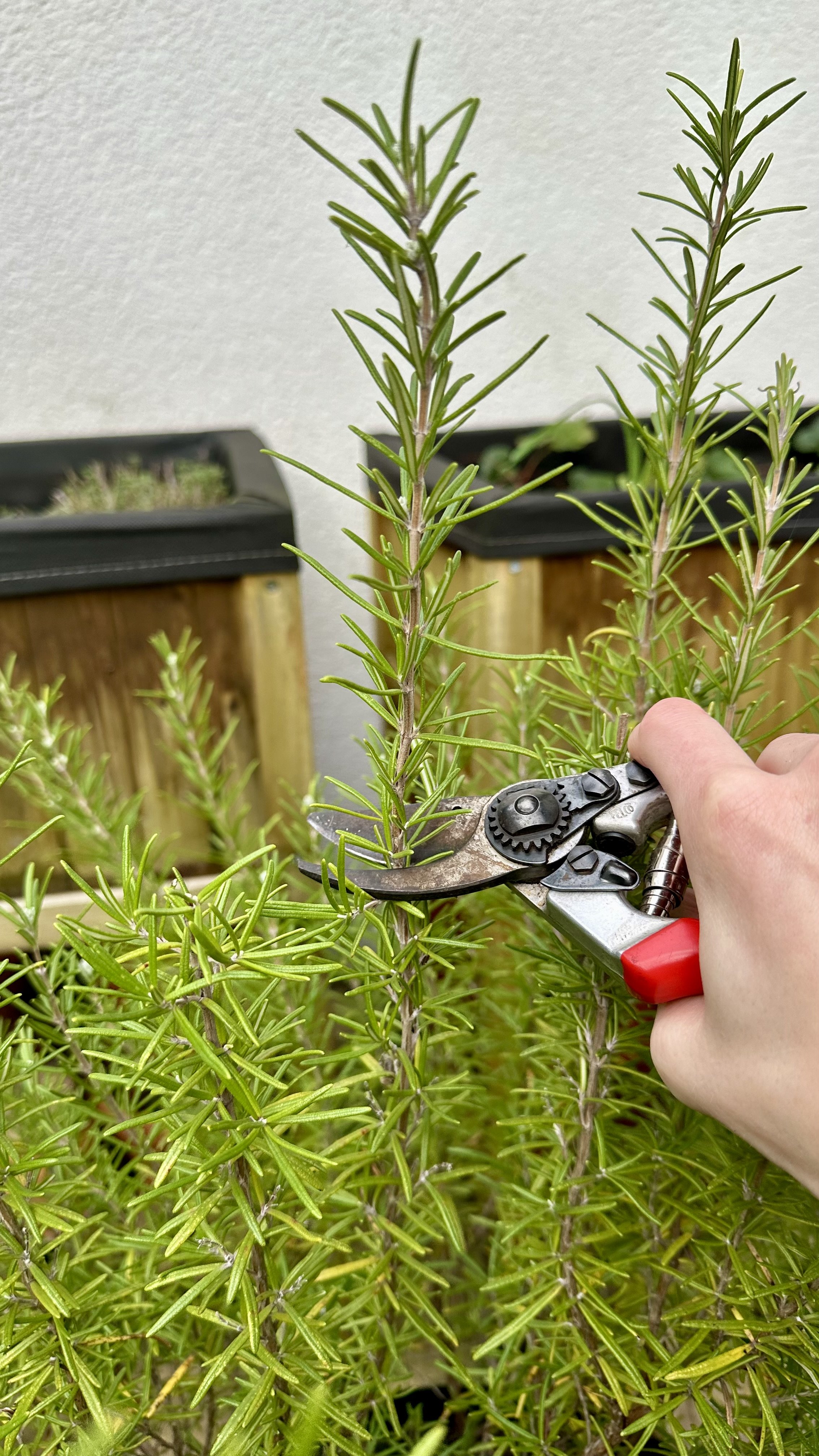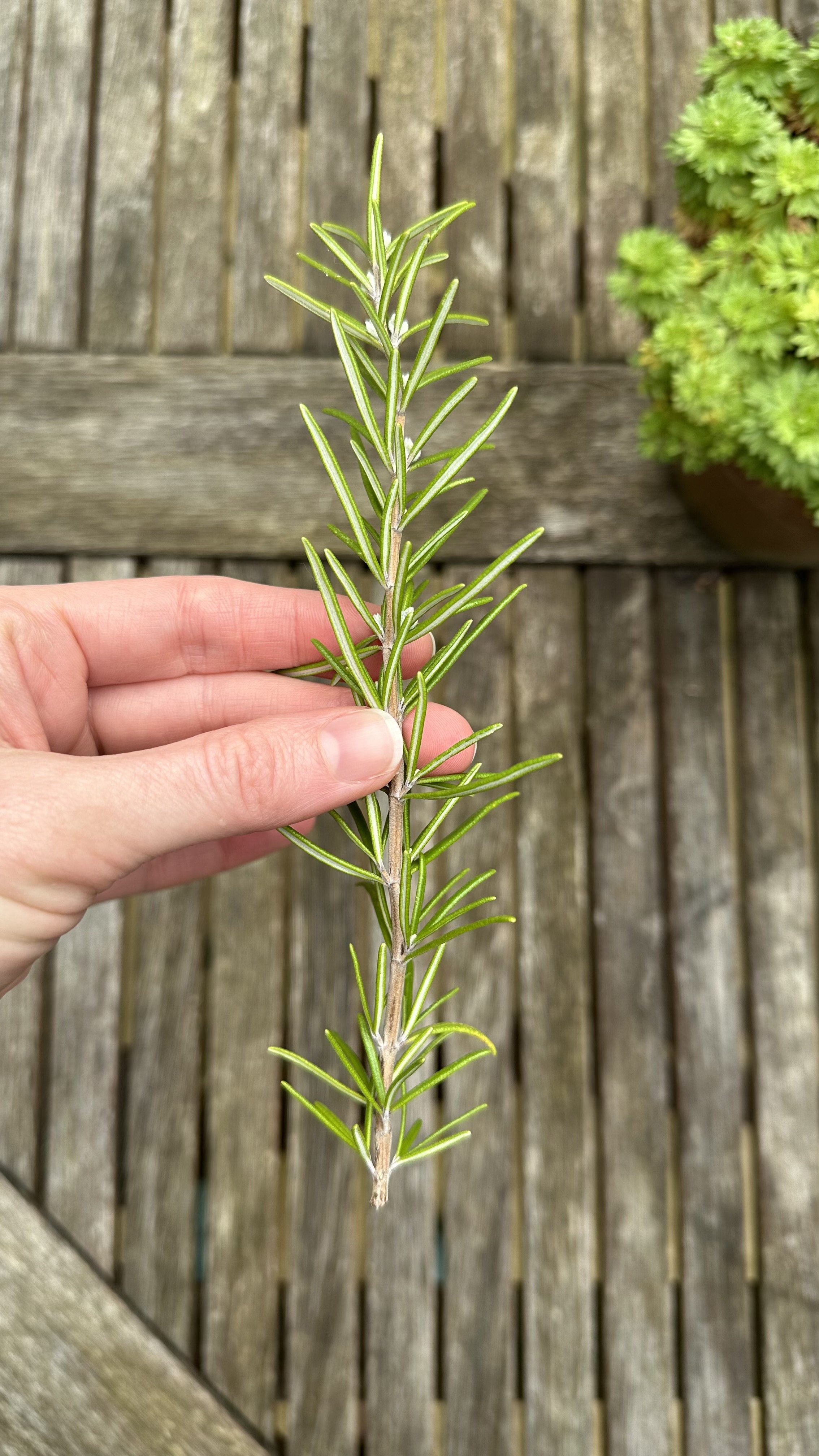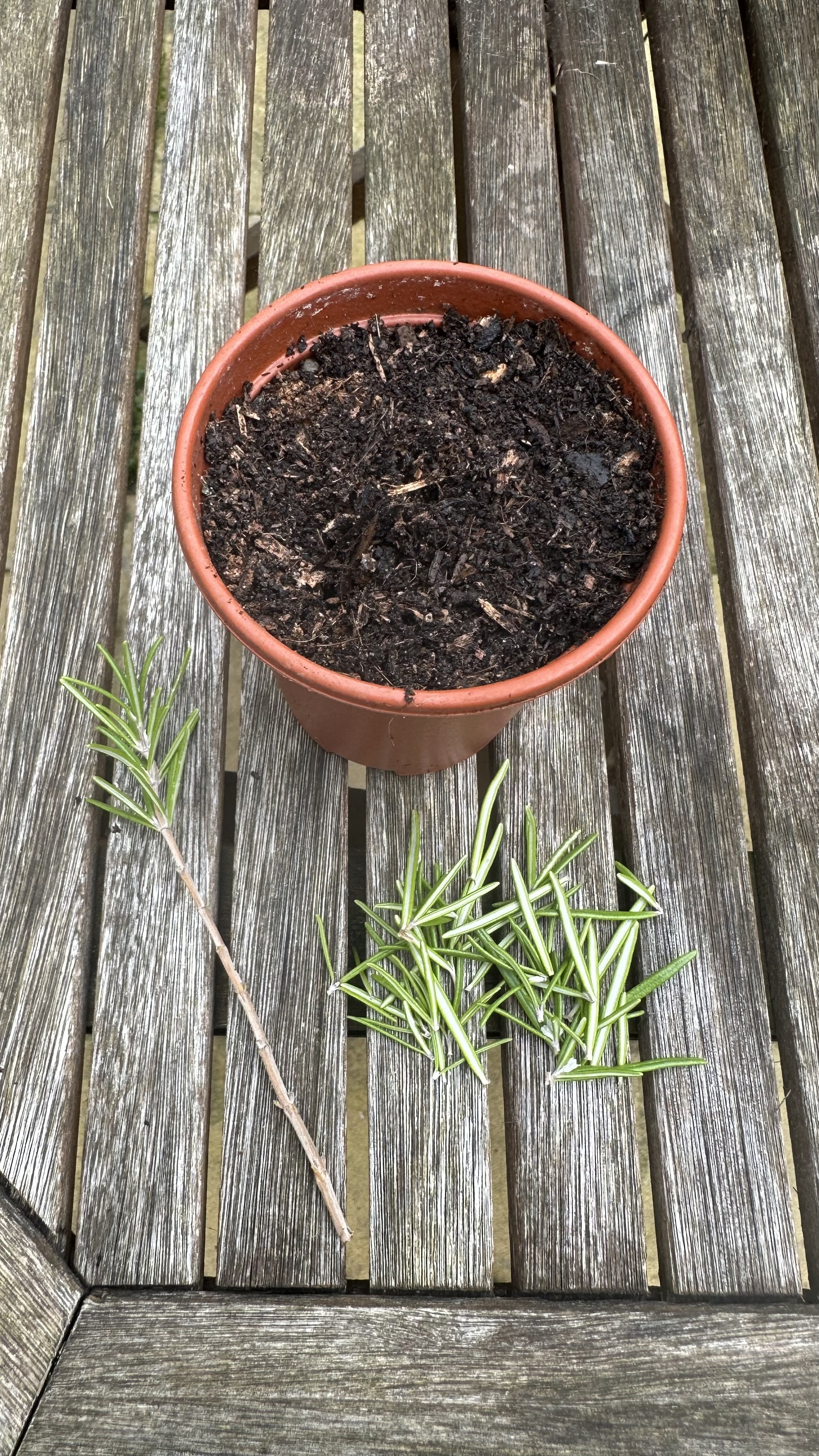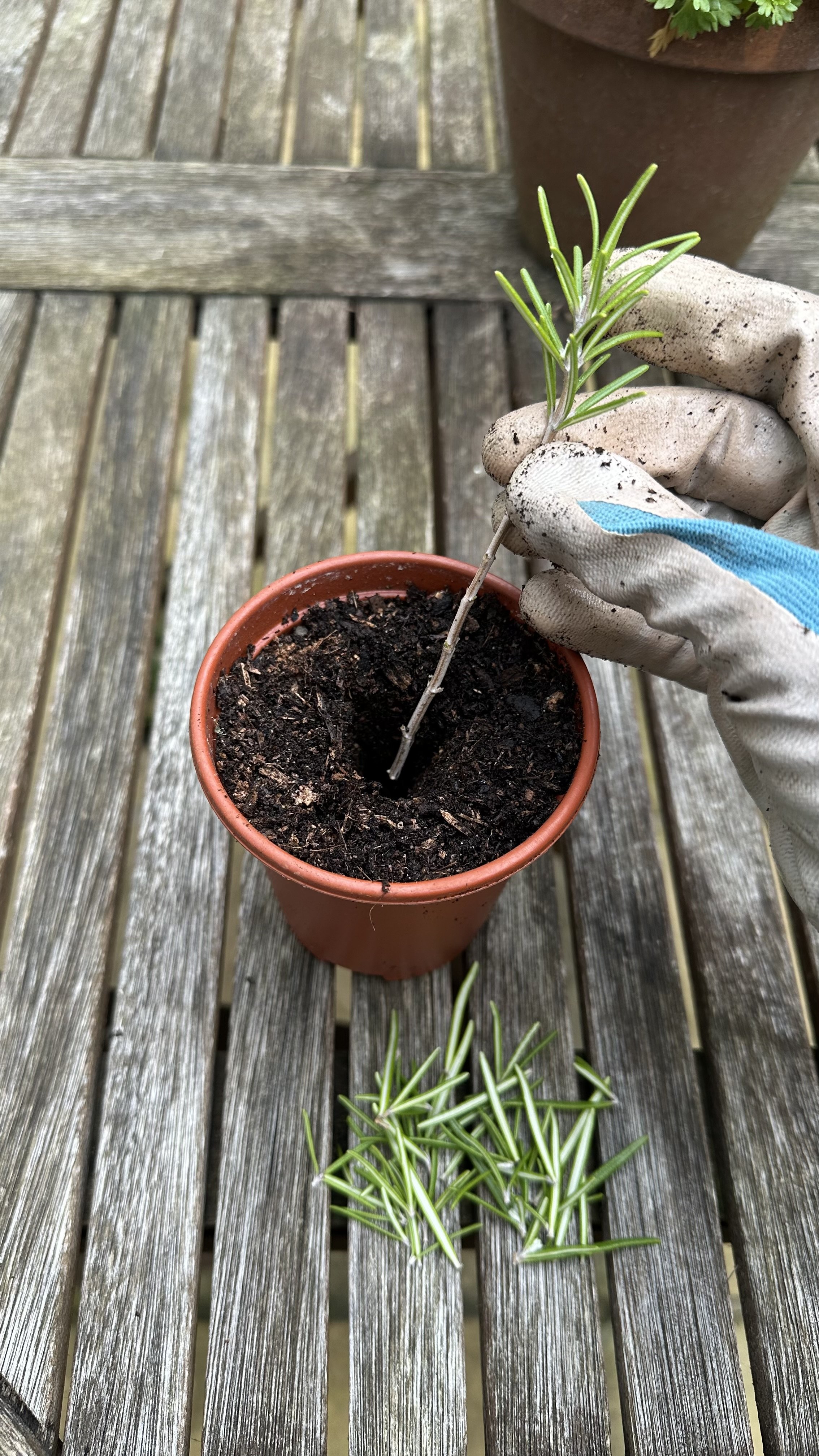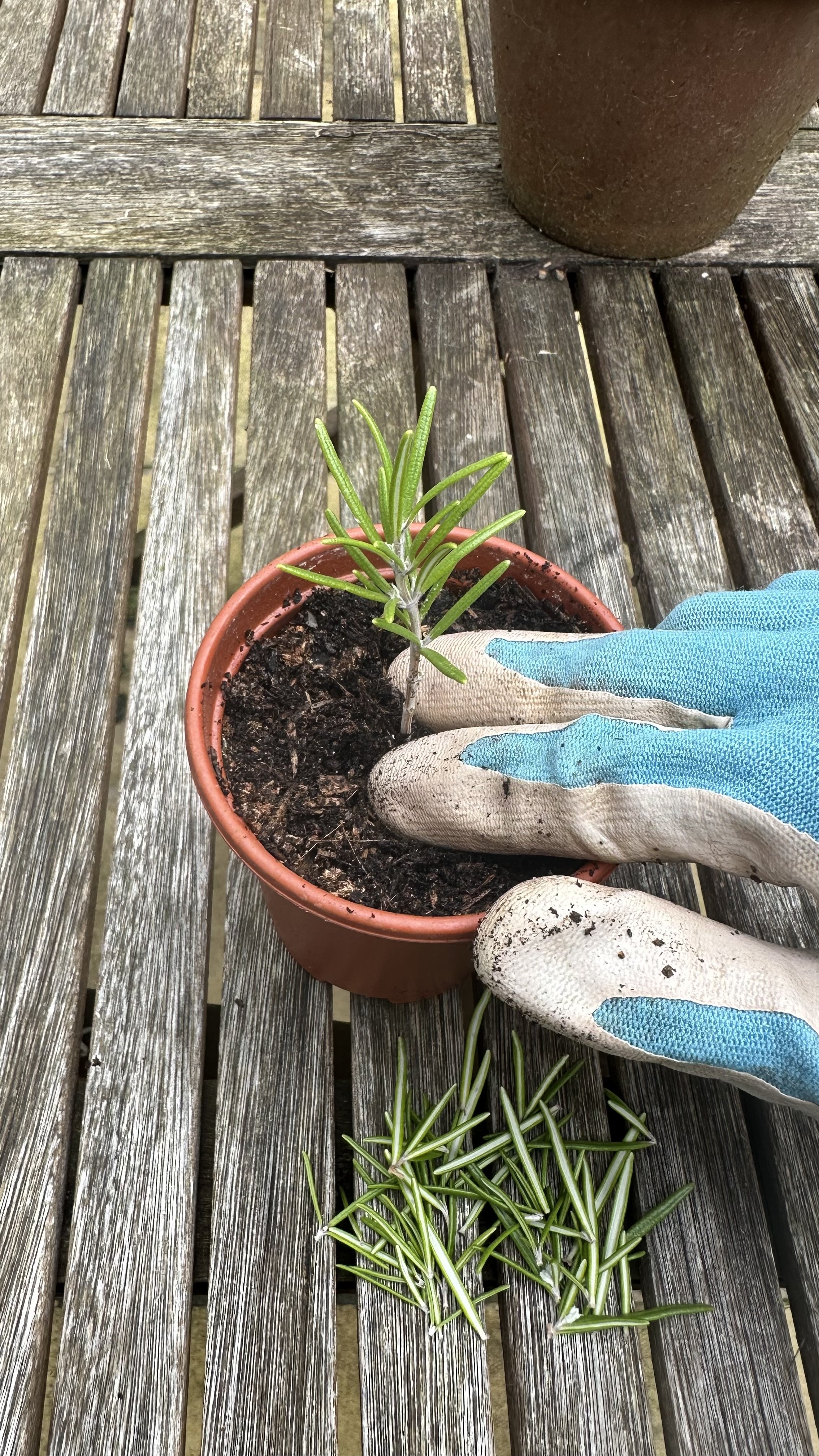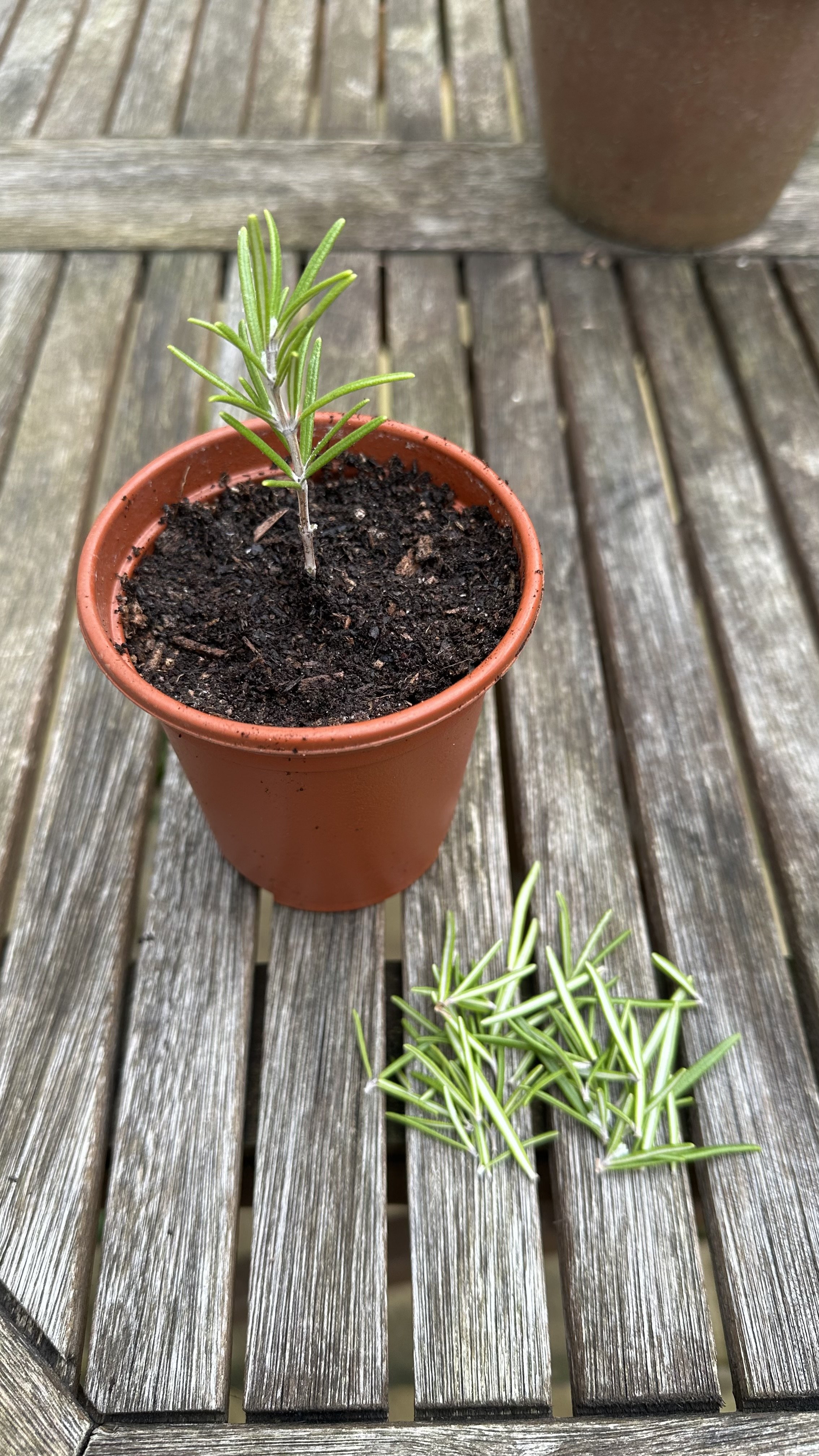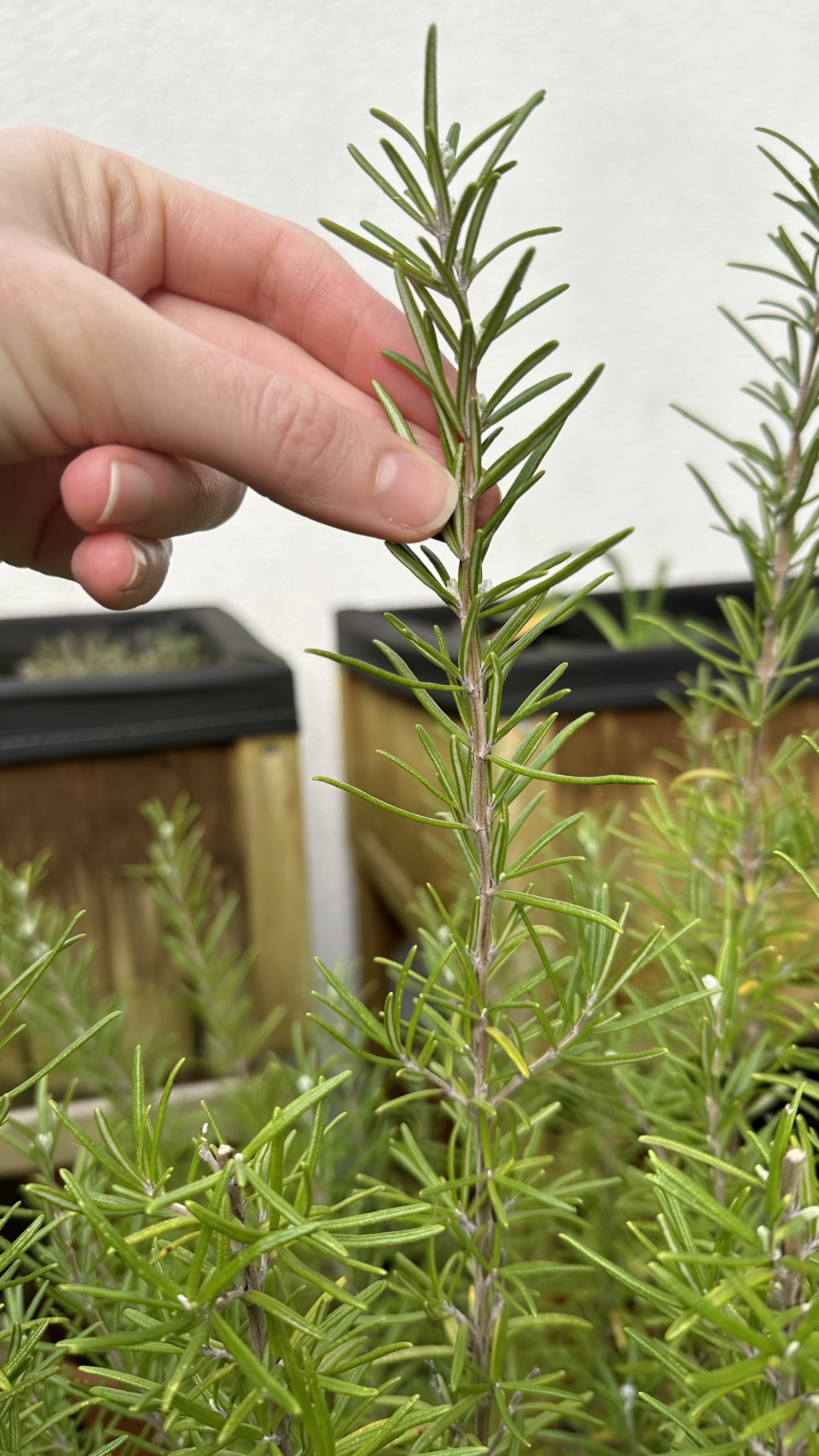How to Propagate Rosemary: A Step-by-Step Guide
This article has links to products that I may make commission from.
Rosemary is one of my favorite plants to grow and cook with.
It is a hardy and easy-to-grow herb that can be easily propagated through stem cuttings.
Propagating rosemary from cuttings is a cost-effective and efficient way to expand your herb garden without spending money on new plants.
Here I will show you the step-by-step process of propagating rosemary, from selecting a healthy mother plant to caring for your new rosemary plants.
With a little patience and the right techniques, you can enjoy an abundance of fresh rosemary in your garden or kitchen.
To learn more about growing rosemary, check out my guides:
Propagating rosemary from cuttings is really easy.
Step 1: Choose a Healthy Rosemary Plant
Before you can propagate rosemary, you need to choose a healthy mother plant with new growth.
Select a plant that is at least 2-3 years old and has a strong stem.
The best time to take cuttings is in the spring or early summer when the plant is actively growing.
It's important to select a plant that is healthy and disease-free, with new growth and no signs of stress or damage.
Look for a plant that has a bushy and compact appearance, with thick and woody stems that are not too woody or too green.
Older plants tend to be better candidates for stem cuttings since they have a well-established root system that can support new growth.
Avoid selecting plants that have recently been fertilized or treated with pesticides, as this can affect the success of the cuttings.
By selecting a healthy and vigorous mother plant, you can increase the chances of success when propagating rosemary from stem cuttings.
Learn more about propagation with my guides:
How to Take Lavender Cuttings: A Step-by-step Guide
This is my mother rosemary plant for taking cuttings. It has strong stems and is 3 years old.
Step 2: Take Rosemary Stem Cuttings
Taking rosemary stem cuttings is a simple process, but there are a few things to keep in mind to increase the success rate of the cuttings.
Here are some tips for taking rosemary stem cuttings:
Timing
The best time to take rosemary stem cuttings is in the spring or early summer when the plant is actively growing.
At this time, the stems are more pliable, and the plant is producing new growth.
Cutting length
Take cuttings that are 4-6 inches long from the tip of a healthy stem.
Make sure the cutting has several sets of leaves on it.
Learn more about propagation with my guides:
Here I am selecting a healthy rosemary stem that is about 6 inches long.
A stem cutting taken from the mother rosemary plant.
Leaf removal
Remove the lower leaves from the stem, leaving only the top two sets of leaves.
This will help the plant focus its energy on developing new roots rather than maintaining the leaves.
For the best herbs to plant with rosemary, check out my guides:
Here I have removed the lower leaves on the rosemary cutting.
Cutting tools
Use a clean and sharp pair of scissors or pruning shears to avoid damaging the stem or introducing disease.
These pruning shears are the best for the job:
Number of cuttings
Take several cuttings from the mother plant to increase the chances of success.
You can take multiple cuttings from the same stem, but make sure there are at least two sets of leaves on each cutting.
By following these tips, you can take rosemary stem cuttings successfully and propagate new plants from them.
Once you have taken the cuttings, you can move on to the next steps in the propagation process, such as preparing the potting soil, dipping the stem in rooting hormone, and planting the cutting.
For tips on how to store dried herbs like rosemary, check out my guide:
Preparing the potting soil for rosemary propagation.
Step 3: Prepare the Potting Soil
Preparing the right potting soil for your rosemary cuttings is crucial for successful propagation.
Here are some tips for preparing potting soil for your rosemary cuttings:
Use well-draining soil
Rosemary cuttings need well-draining soil to avoid root rot.
You can use a mix of potting soil and perlite or coarse sand to ensure good drainage.
Avoid high-nutrient soil
Rosemary cuttings do not need a lot of nutrients to root successfully.
Using soil with high nutrient content can actually hinder root growth.
Instead, opt for a light, nutrient-poor soil.
Here is the potting soil for propagation that I recommend:
Moisten the soil
Before planting the cuttings, moisten the potting soil lightly so that it is damp but not soaking wet.
You can add some perlite or sand to the potting mix to improve drainage.
Here is the perlite I recommend:
Choose the right container
Use a small container, such as a 3-4 inch pot, to plant your rosemary cuttings.
Make sure the container has drainage holes to prevent waterlogging.
These nursery pots with drainage holes are perfect:
By following these tips, you can prepare the right potting soil for your rosemary cuttings and ensure that they have the best chance of rooting successfully.
Step 4: Dip the Rosemary Stem in Rooting Hormone
Rooting hormone is a substance that promotes the development of new roots in plant cuttings.
While not necessary for rooting rosemary cuttings, using rooting hormone can significantly increase the chances of success.
Here are some tips for using rooting hormone on your rosemary cuttings:
Choose the right rooting hormone
There are several types of rooting hormone available, including powder, liquid, and gel.
Choose a rooting hormone that is suitable for semi-hardwood or woody cuttings, as these are the types of cuttings that rosemary stem cuttings are considered to be.
Here is the rooting hormone I recommend:
Apply the rooting hormone
Dip the cut end of the rosemary stem cutting into the rooting hormone, making sure to cover the cut end thoroughly.
Shake off excess hormone
Tap the cutting gently to remove any excess rooting hormone, as too much can harm the cutting.
Tap the cutting gently
This will help to remove any excess hormone.
Plant the cutting
Once the cutting has been dipped in rooting hormone, plant it in the prepared potting soil.
By using rooting hormone on your rosemary cuttings, you can significantly increase the chances of success and ensure that your new plants develop strong root systems.
Step 5: Plant the Rosemary Cutting
Once you have prepared the potting soil and dipped the rosemary cutting in rooting hormone, it's time to plant it.
Here are some tips for planting your rosemary cutting:
For more herb garden tips, check out my guides:
Making a hole in the soil for the rosemary cutting.
Make a hole in the soil
Use a pencil or your finger to make a hole in the center of the potting soil.
The hole should be deep enough to accommodate the entire cutting, including the part that has been dipped in rooting hormone.
Place the cutting in the hole
Gently place the cutting in the hole, making sure that the cut end is covered by the soil.
Firmly press the soil around the cutting to secure it in place.
Placing the rosemary cutting in the potting soil.
Firming the potting soil around the rosemary cutting.
Water the cutting
Water the soil around the cutting until it is evenly moist.
Avoid over-watering, as this can cause the cutting to rot.
For this you can use rainwater collected from a water butt.
Cover the pot
Cover the pot with a clear plastic bag to create a humid environment for the cutting.
This will help to prevent the cutting from drying out and encourage the development of new roots.
Place the pot in indirect light
Place the pot in a warm, bright location that receives indirect sunlight.
Avoid placing the pot in direct sunlight, as this can cause the cutting to dry out.
By following these tips, you can successfully plant your rosemary cutting and provide it with the best conditions for rooting and growth.
Be patient and check the cutting regularly for new growth and root development.
With time and care, your cutting will develop into a healthy new rosemary plant.
For more herb garden inspiration, check out my guides:
Rosemary successfully propagated.
Step 6: Care for the New Rosemary Plant
Once your rosemary cutting has developed new growth and has started to establish roots, it's time to care for the new plant.
Here are some tips for caring for your new rosemary plant:
Water the plant regularly
Rosemary plants prefer well-draining soil that is kept evenly moist, but not waterlogged.
Keep the soil evenly moist, but not wet, until the roots form.
You can cover the pot with a plastic bag or dome to increase humidity and retain moisture.
Check the cutting regularly and mist it with water if the soil begins to dry out.
Learn how to properly water rosemary with my guide: How Often to Water Rosemary.
Provide adequate light
Rosemary plants require at least 6 hours of sunlight per day, so choose a bright, sunny location for your new plant.
If you are growing your rosemary plant indoors, place it near a south-facing window or under a grow light.
Fertilize sparingly
Rosemary plants do not require a lot of fertilizer, and over-fertilization can harm the plant.
Use a light fertilizer once every 4-6 weeks during the growing season.
Here is the fertilizer I recommend:
Prune regularly
Regular pruning will help to keep your rosemary plant compact and encourage new growth.
Pinch back the tips of the branches regularly to encourage bushiness.
Here are the pruning shears I recommend for the job:
Protect from cold temperatures
Rosemary plants are sensitive to cold temperatures and can be damaged by frost.
If you live in a cold climate, bring your rosemary plant indoors during the winter months or cover it with a frost blanket.
By following these tips, you can ensure that your new rosemary plant thrives and produces fragrant, flavorful leaves for your culinary needs.
With proper care, your rosemary plant can provide you with years of delicious rosemary in the kitchen.
For more herb growing ideas, check out my guides:
Is rosemary easy to propagate?
Yes, rosemary is relatively easy to propagate from stem cuttings.
In fact, it is one of the easiest herbs to propagate, making it a great choice for beginner gardeners or anyone looking to expand their herb garden without having to purchase new plants.
While rosemary is generally easy to propagate, it is important to follow the proper techniques to ensure success.
This includes choosing a healthy parent plant, taking stem cuttings from new growth, and providing the right amount of warmth, humidity, and light during the rooting process.
With a little bit of patience and the right techniques, you can successfully propagate rosemary and enjoy the benefits of fresh, homegrown herbs in your cooking.
Learn how to propagate more herbs with my guides:
Where to grow rosemary in the garden?
Rosemary is a versatile and hardy plant and is a good choice for a south facing garden because it thrives in sunny, warm conditions and can tolerate the intense heat and direct sunlight.
Here are some tips on where to grow rosemary in the garden:
Choose a sunny location
Rosemary plants require at least 6 hours of sunlight per day, so choose a location in your garden that receives full sun.
Avoid planting in shady areas or areas with partial shade, as this can cause the plant to become leggy and weak.
Select well-draining soil
Rosemary plants prefer well-draining soil that is sandy or loamy in texture.
Avoid planting in heavy clay soil, as this can cause water to accumulate around the roots and lead to root rot.
Plant in a raised bed
If your garden soil is heavy or poorly draining, consider planting your rosemary in a raised bed.
This will provide better drainage and prevent water from accumulating around the roots.
Check out my guide How to Start a Raised Bed Herb Garden.
This raised bed works perfectly:
Provide protection from the wind
Rosemary plants can be damaged by strong winds, so choose a location in your garden that is sheltered from the wind.
If your garden is exposed, consider planting your rosemary near a fence or wall for protection.
Consider container gardening
If you don't have suitable garden space, or if you live in a cold climate, consider growing your rosemary in a container.
Choose a pot that is at least 12 inches in diameter, and use a well-draining potting soil.
Place the pot in a sunny location and water the plant regularly.
More herb garden inspiration:
My rosemary growing in a container.
By following these tips, you can successfully grow rosemary in your garden.
Growing rosemary via plant propagation is a really rewarding part of gardening and cost-effective way to grow new rosemary plants.
By following the steps outlined in this guide, you can successfully propagate rosemary and establish healthy new plants that will provide you with fragrant and flavorful leaves for your culinary needs.
Remember to choose a healthy rosemary plant, take stem cuttings, prepare the potting soil, dip the stem in rooting hormone, and plant the cutting in a warm, bright location.
With regular care and maintenance, your new rosemary plant will thrive and provide you with years of culinary enjoyment.


